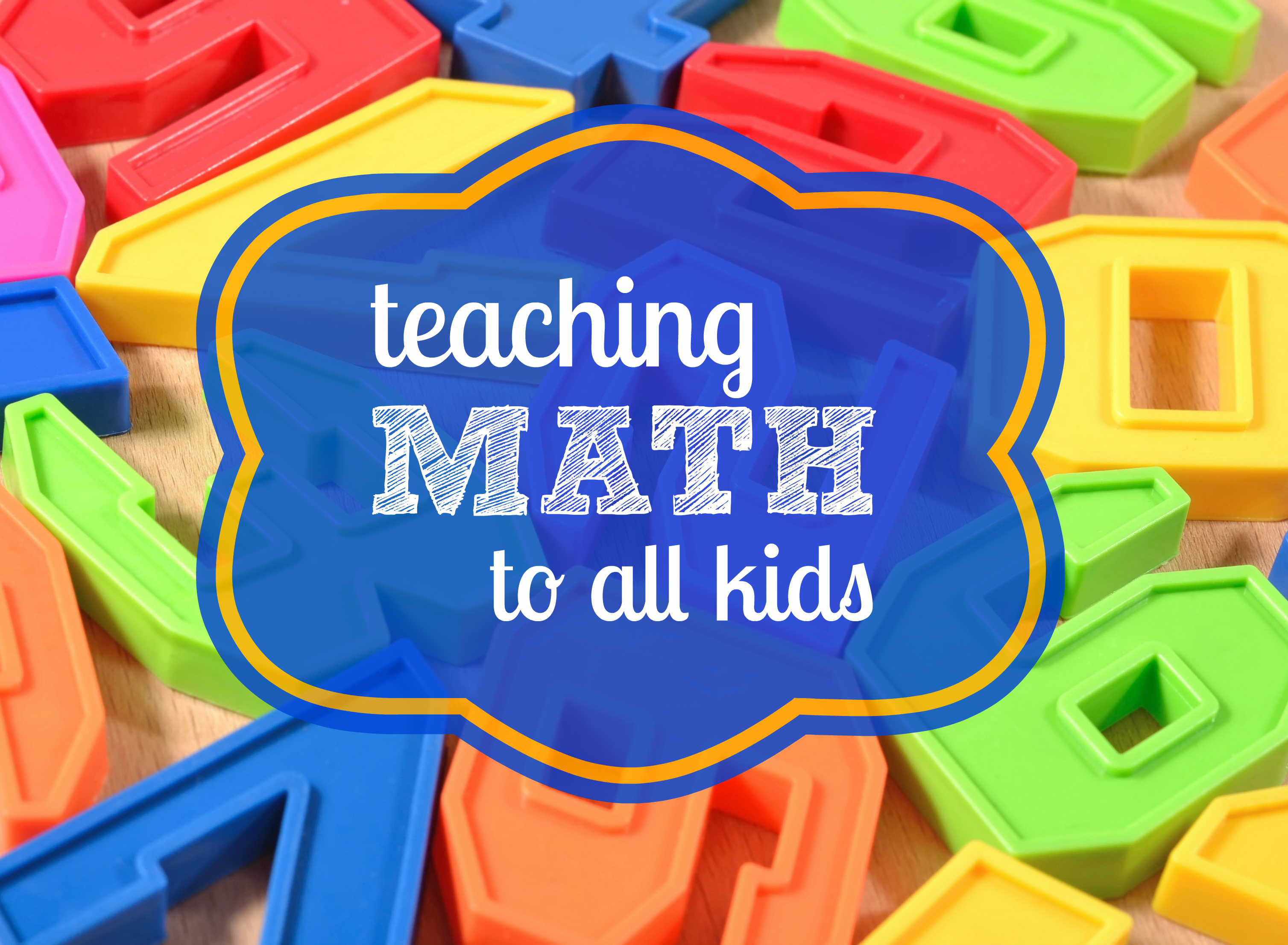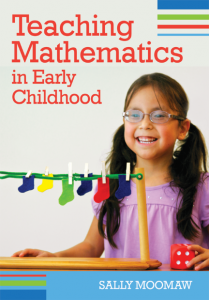8 Tips for Teaching Math to ALL Young Children
December 3, 2015
Hello, Inclusion Lab readers! How’s your school year going so far? If your stress levels are on the rise, be sure to check out our post on stress-busters—they’re great suggestions for teachers and everyone who feels extra-harried this time of year.
 Today, I’m bringing you some easy ways to meet the needs of young students with disabilities during math activities—and help all kids participate and learn in the process. These tips are adapted from Sally Moomaw’s Teaching Mathematics in Early Childhood, a book that helps early childhood educators teach critical math concepts to young students while meeting national standards for mathematics education. They’re intended for use in early childhood classrooms, but the strategies are easily adaptable for older students, too.
Today, I’m bringing you some easy ways to meet the needs of young students with disabilities during math activities—and help all kids participate and learn in the process. These tips are adapted from Sally Moomaw’s Teaching Mathematics in Early Childhood, a book that helps early childhood educators teach critical math concepts to young students while meeting national standards for mathematics education. They’re intended for use in early childhood classrooms, but the strategies are easily adaptable for older students, too.
For children with visual difficulties…
Alter your materials so students can feel the mathematical properties. Puffy paint is your friend. Use it to outline the spaces on path games, the words on math cards or charts, and the objects on grid boards. (Want to make your own puffy paint for pennies? Here are 3 super-simple tutorials from WikiHow.) You can also mount puffy stickers on 1-inch cubes to make dice with raised dots—accessible to every student, and fun to use, too! For students with some visual functioning, choose materials with a high contrast between the background and foreground images.
For children working on social skills…
Kids who are working on their social learning may find it challenging to put concepts like turn-taking into practice. Try this: when the school year starts, mount photos of the children and their names on easy-to-read cards, and attach the cards together with a notebook ring. (Remember to get permission from parents before you take students’ pictures.) During a math game, the children can flip the cards to see whose turn is next. Visual reminders like these can really help kids who need extra social cues.
For children with math anxiety…
Kids with and without special needs can experience math anxiety. Be on the lookout for students who seem to avoid math or get uncomfortable during math-related activities. For these kids, it might help to move a math activity to another area of the classroom they enjoy. If a student is very physically active, for example, try creating a fun path game in the gross motor area where they count by jumping to numbers.
For children with differing cognitive abilities…
Most path games, grid games, and card games are adaptable, allowing children at different cognitive levels to participate and demonstrate their knowledge. For children with cognitive challenges, you can vary the difficulty levels of these games by increasing or decreasing the sizes of sets on the dice or cards. For example, in the Doghouse grid game (see the download below), you can increase or decrease the dots on the cards or modify the object of the game according to your individual students’ abilities.
For children with hearing loss…
Be sure to model math concepts with objects and gestures your students can clearly see. For example, say you’re teaching counting with a “Bears Out of Bed” chart. When it’s time to show that two bears have left the bed, place a large, brightly colored numeral 2 on the chart and hold up two fingers as you point to the number. This will reinforce the concept for all children while you meet the needs of your students with hearing issues.
For children with attention issues…
Young learners who struggle to maintain attention will often find it easier to focus when words are sung instead of spoken. Try using songs to accompany math concepts whenever you can, and you might see an uptick in all your students’ attention spans. (Looking for some new math songs to engage young children? Here’s a great Pinterest board I found with songs that help teach counting, money values, and simple addition and subtraction.)
For children with communication challenges…
Children with communication challenges might not have the language to express concepts like more, less, and how many. Using simple sign language gestures can help, especially since many children will already know the signs like “more” and “less” from other contexts. Sally Moomaw relates this example to show how sign language can be used in math class: “In one classroom, line drawings showing the hand position for ‘more’ were used on a spinner for a child with autism spectrum disorder. One ‘more’ drawing appeared on one section of the spinner, and two ‘more’ drawings were placed on the other section. The child used this spinner when playing quantification games, and the images were paired with the actual gesture for the sign.”
You might also try using universal gestures when modeling math concepts. Spread your arms wide apart to convey a large amount, or hold your hands close together to represent “few,” and hold up fingers to convey specific quantities of objects. When you pair signs and gestures with objects and words, you’re helping all your students create links to symbolic language.
For children learning English as a second language…
Look for predictable books you can use to convey math concepts as you reinforce language skills. For example, you might choose a book that clearly depicts fish as little, big, bigger, and biggest. Point to the illustrations as you read the book, and all children—including those learning English—will see the connection between the words, the pictures, and the concept. (Gestures that reflect mathematical concepts can also be helpful for English language learners.)
Here are three fun and easily adaptable activities from Teaching Mathematics in Early Childhood. Give them a try and let us know how you like them!





Write a Comment
Your email address will not be published. Required fields are marked *
comments
Marion J. Campbell says
Thank you so very much for sharing this post! These tips are so helpful in teaching students with learning disabilities and also helpful for making them concentrated on mathematics practicing. Recently, I have found an inspirational website for doing math - https://plainmath.net/ Check it for more ways to solve different sorts of mathematics from watching video tutorials. I hope you will be posting more ways to make math interesting to students. Thanks again for sharing!
Harris says
Thanks for sharing this post!
Post a Comment